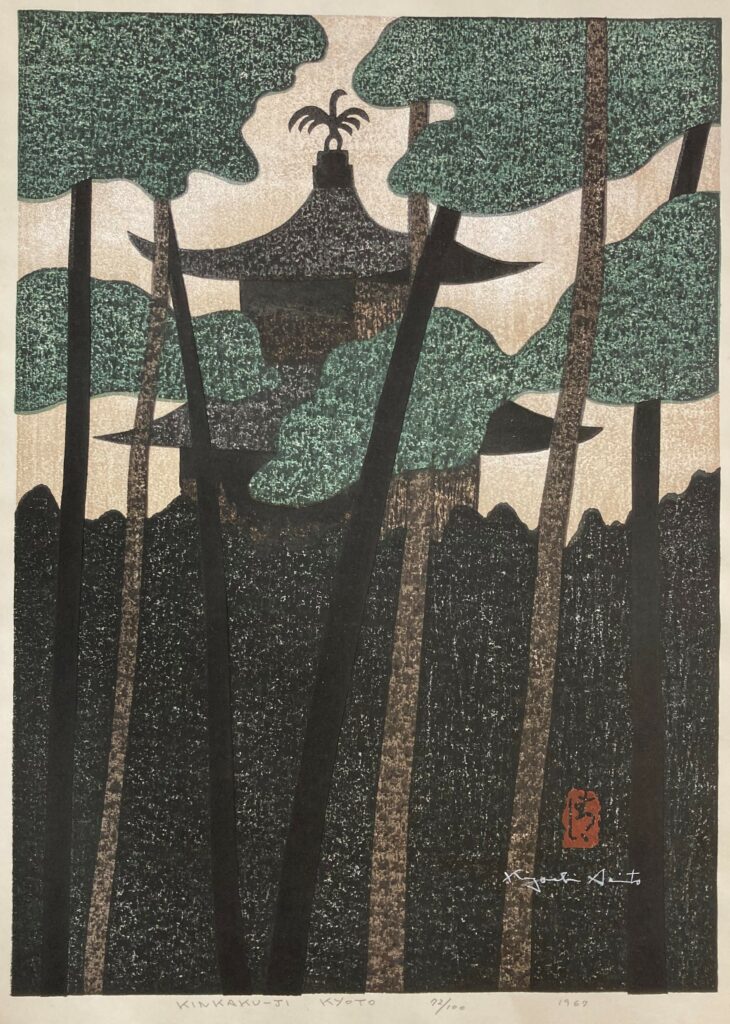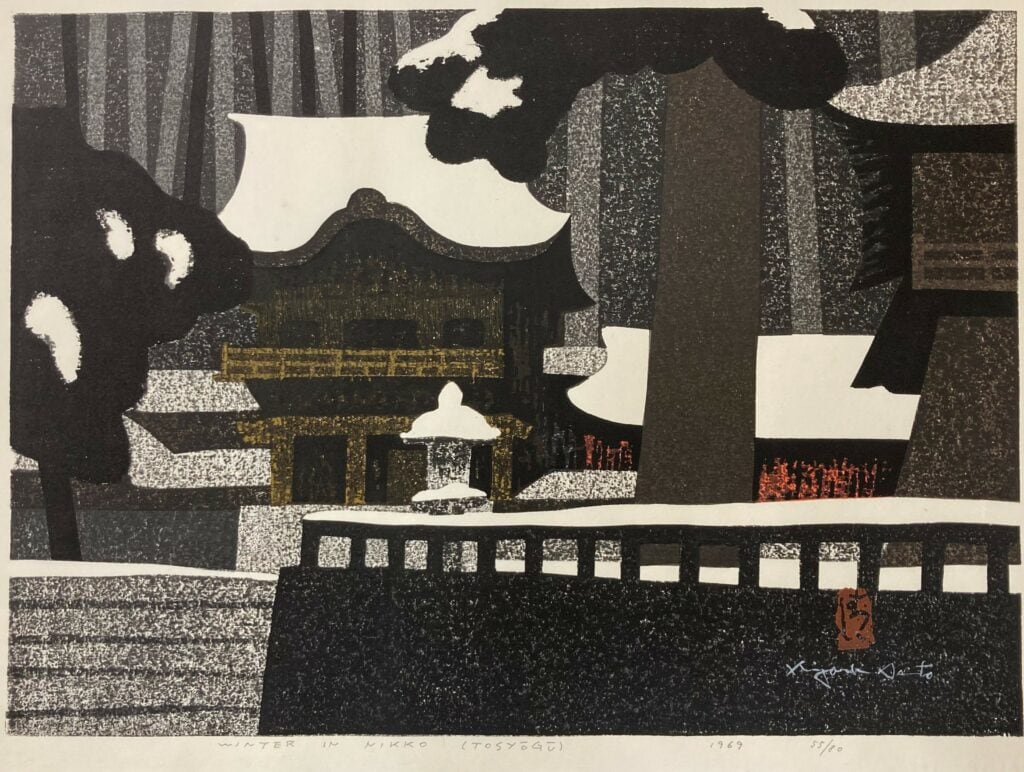The Dayton Art Institute currently has a one gallery special exhibit that’s a powerhouse of woodblock prints. If you’re interested in Japanese art, I encourage you to see The Prints of Saitō Kiyoshi which is on display until July 16, 2023 in Gallery 105. There you’ll find a small but strong selection of twelve prints by Saitō Kiyoshi (1907-1997) one of the premier sōsaku-hanga (creative prints) movement artists of the 20th century.
Beginning in the early 20th century, Japanese sōsaku-hanga artists rejected the traditional woodblock printing process. They took control of their artistic creations away from publishers who since the 17th century had dictated subject matter and a collaborative production process involving artist, block carver and printer. Motivated by the desire for self-expression and artistic control, the sōsaku-hanga artists chose their subject matter and style then carved and printed the designs themselves. Their art was jiga (self-drawn), jikoku (self-carved) and jizuri (self-printed).
Born in 1907 in Aizu, snow country in northern Japan, Saitō was fond of painting at a young age and apprenticed with a sign painter, even starting his own sign painting business at age 20. After taking drawing lessons from a local teacher, he became fascinated with the art world. Saitō moved to Tokyo in 1932 and studied painting while working as a sign painter, but he found his true means of expression in printmaking.
Sōsaku-hanga printmakers mentored him and invited him to printmaking clubs. At first Saitō’s work was realistic. However, after studying modern European painters like Mondrian, Picasso and Kandinsky, Saitō gradually incorporated elements of modernism, cubism, abstract expressionism, and impressionism in his work. It is his later semi-abstract prints that are featured in this exhibit.

Saitō’s subjects ranged from traditional Japanese landscapes and rural architecture to human figures, cats, and especially women in elaborate kimono. In Persimmon Tree in Aizu Saitō exaggerated the roof of a traditional Japanese farmhouse which becomes a contrasting background for the bright red fruit and the black dancing branches of the tree. Notice the tiny figures going about their daily work and the laundry on the line. All the forms are bold and simplified.

A prominent feature of the artist’s prints is his use of texture, including incorporating the wood grain of the printing block and effects from cutting and scratching the surface with knives and awls. Saitō nearly filled the design of Kinkaku-ji, Kyoto with a rough texture. The temple is actually covered with gold leaf, but here he shows just a dark silhouette behind the swaying trees. The sky is a smooth cream background that emphasizes the phoenix with outspread wings on the temple roof. Saitō said, “I work to create painting without a brush, using the flat surface of the plate instead.”

There are four other prints featuring religious architecture, including Winter in Nikko (Tōshō-gū). Here we see part of the great shrine complex dedicated to the first Tokugawa shogun, perhaps in the evening. The roofs of a few of the great buildings are blanketed in snow. The vertical trees in the foreground and background echo the pattern of the railing. Many of the buildings at Nikko are brightly painted, but again Saitō reduces the buildings to dark solid shapes, then includes just a touch of red behind the main tree.

Saitō can also be playful, as we see in Cat and Girl from 1952. The subjects face each other nose to nose and eye to eye. Saitō’s career took off after the war, thanks in part to the wives of senior occupation headquarters officers who promoted his prints. In 1951 he was the first Japanese to win a top prize at the Sao Paulo Biennale, which brought him international recognition. Virginia W. Kettering, who collected all the prints on view in the DAI exhibition, was one of many Americans who admired his prints while in Japan during the post-war years.

I’ve saved one of my favorite prints for last. Begun in 1938, Saitō’s most famous series and largest body of works is Winter in Aizu. The stark, monochromatic winter landscapes and village scenes capture the beauty of the snow country and resilience of the people of the artist’s birthplace. Standing quietly in front of one of the prints was a special experience for me. The scene reminded me of the serene quiet after a big snowfall just as evening falls. I could practically hear the crunching footsteps of the solitary figure carrying wood to one of the two houses in the background, their tall roofs shrouded in thick snow. Soon he or she would sit beside a cozy fire as the village, nestled in the valley among the nearby mountains, settled down for the night.
Saitō Kiyoshi’s career spanned six decades. He was largely self-taught but his artistic vision was strong and he developed a personal style that still appeals to private collectors and museums around the world. In 1985, a large show of Saitō’s work was held at a department store in Tokyo. More than 800 copies of his prints sold in less than a week. He was decorated with Japan’s highest honors for his distinguished contribution to Japanese arts: The Order of Sacred Treasure (1981) and The Order of Culture (1995). Saitō Kiyoshi passed away at the age of 90 on November 14, 1997, shortly after opening the Kiyoshi Saitō Museum of Art in Yanaizu, Japan.